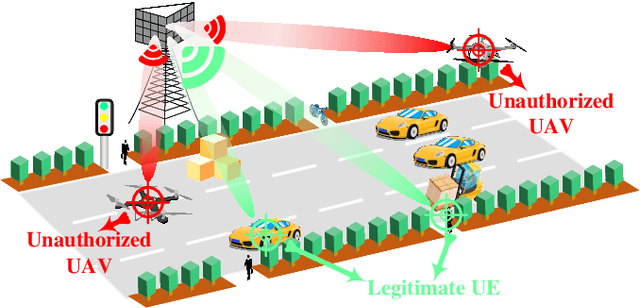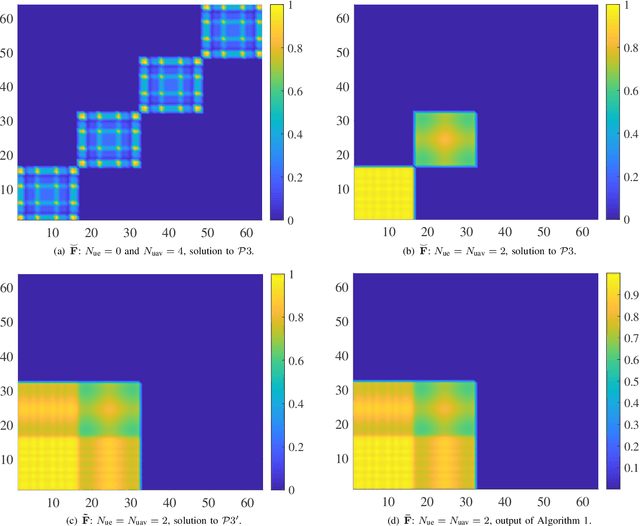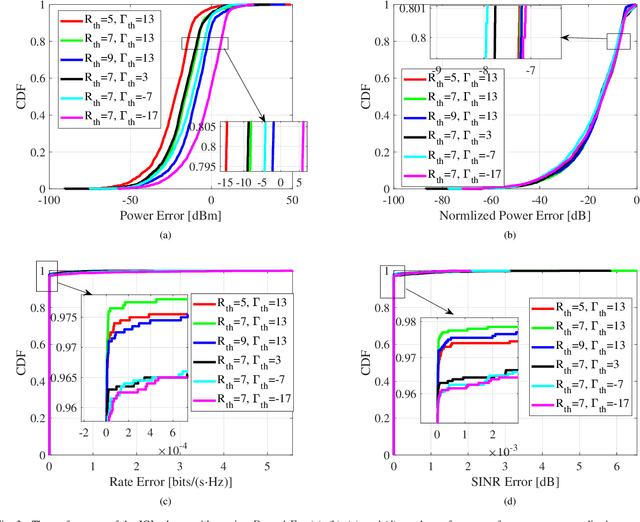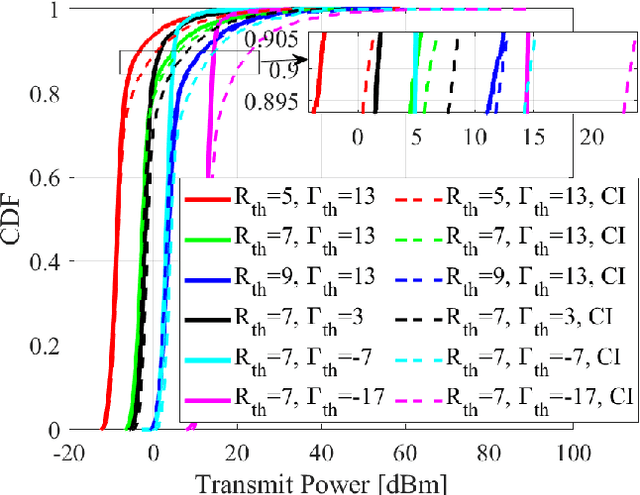Kuiyu Wang
Unauthorized UAV Countermeasure for Low-Altitude Economy: Joint Communications and Jamming based on MIMO Cellular Systems
Oct 31, 2024



Abstract:To ensure the thriving development of low-altitude economy, countering unauthorized unmanned aerial vehicles (UAVs) is an essential task. The existing widely deployed base stations hold great potential for joint communication and jamming. In light of this, this paper investigates the joint design of beamforming to simultaneously support communication with legitimate users and countermeasure against unauthorized UAVs based on dual-functional multiple-input multiple-output (MIMO) cellular systems. We first formulate a joint communication and jamming (JCJ) problem, relaxing it through semi-definite relaxation (SDR) to obtain a tractable semi-definite programming (SDP) problem, with SDR providing an essential step toward simplifying the complex JCJ design. Although the solution to the relaxed SDP problem cannot directly solve the original problem, it offers valuable insights for further refinement. Therefore, we design a novel constraint specifically tailored to the structure of the SDP problem, ensuring that the solution adheres to the rank-1 constraint of the original problem. Finally, we validate effectiveness of the proposed JCJ scheme through extensive simulations. Simulation codes are provided to reproduce the results in this paper: https://github.com/LiZhuoRan0. The results confirm that the proposed JCJ scheme can operate effectively when the total number of legitimate users and unauthorized UAVs exceeds the number of antennas.
Knowledge and Data Dual-Driven Channel Estimation and Feedback for Ultra-Massive MIMO Systems under Hybrid Field Beam Squint Effect
Mar 19, 2024



Abstract:Acquiring accurate channel state information (CSI) at an access point (AP) is challenging for wideband millimeter wave (mmWave) ultra-massive multiple-input and multiple-output (UMMIMO) systems, due to the high-dimensional channel matrices, hybrid near- and far- field channel feature, beam squint effects, and imperfect hardware constraints, such as low-resolution analog-to-digital converters, and in-phase and quadrature imbalance. To overcome these challenges, this paper proposes an efficient downlink channel estimation (CE) and CSI feedback approach based on knowledge and data dual-driven deep learning (DL) networks. Specifically, we first propose a data-driven residual neural network de-quantizer (ResNet-DQ) to pre-process the received pilot signals at user equipment (UEs), where the noise and distortion brought by imperfect hardware can be mitigated. A knowledge-driven generalized multiple measurement vector learned approximate message passing (GMMV-LAMP) network is then developed to jointly estimate the channels by exploiting the approximately same physical angle shared by different subcarriers. In particular, two wideband redundant dictionaries (WRDs) are proposed such that the measurement matrices of the GMMV-LAMP network can accommodate the far-field and near-field beam squint effect, respectively. Finally, we propose an encoder at the UEs and a decoder at the AP by a data-driven CSI residual network (CSI-ResNet) to compress the CSI matrix into a low-dimensional quantized bit vector for feedback, thereby reducing the feedback overhead substantially. Simulation results show that the proposed knowledge and data dual-driven approach outperforms conventional downlink CE and CSI feedback methods, especially in the case of low signal-to-noise ratios.
 Add to Chrome
Add to Chrome Add to Firefox
Add to Firefox Add to Edge
Add to Edge